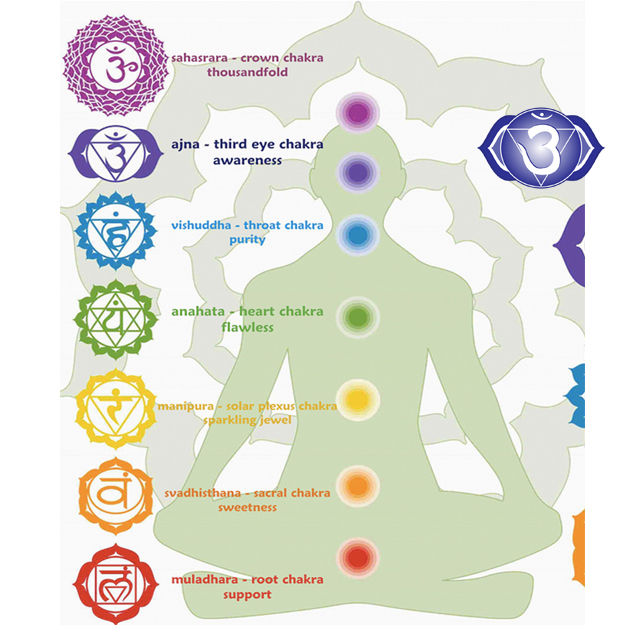Ajna Chakra ( Adnya Chakra / Third Eye)
Yoga is for Posers.

Ajna (Sanskrit: ?????, IAST: ?jñ?, IPA: [a???a?]), guru chakra or third-eye chakra, is the sixth primary chakra in the body according to Hindu tradition. It is supposedly a part of the brain which can be made more powerful through meditation, yoga and other spiritual practices just as a muscle is. In Hindu tradition, it signifies the subconscious mind, the direct link to the brahman. While a person's two eyes see the physical world, the third eye is believed to reveal insights about the future. The third eye chakra is said to connect people to their intuition, give them the ability to communicate with the world, or help them receive messages from the past and the future. The Ajna chakra is located in the brain, directly behind the center of the eyebrows. The location makes it a sacred spot where Hindus apply a vermilion bindi to show reverence for it. Ajna is described as a transparent lotus flower with two white petals, said to represent the nadis (psychic channels) Ida and Pingala, which meet the central Sushumna nadi before rising to the crown chakra, Sahasrara. The letter "ham" (??) is written in white on the left petal and represents Shiva, while the letter "ksham" (????) is written in white on the right petal and represents Shakti. Inside the pericarp of the flower is the hakini Shakti. It is depicted with a white moon, six faces, and six arms holding a book, a skull, a drum, and a rosary, while making the gestures associated with granting boons and dispelling fears. The downward-pointing triangle above her contains a white lingam. This triangle, along with the lotus flower, can represent wisdom. In some systems the deity Ardhanarishvara, a hermaphrodite form Shiva-Shakti, resides within the lingam and symbolizes the duality of subject and object.This sixth chakra of our energy body is also connect with sixth layer of aura which known as celestial layer of aura science. The seed syllable of Ajna is Ksham and the more well known, Om, or "Pranava Om", which is believed to be the basic sound of the world and contains all other sounds. It is considered the supreme sound of the universe. The B?ja mantras are monosyllabic seed sounds which, when they are spoken aloud, activate the energy of the chakras in order to purify and balance the mind and body. The energy resonates in the chakra associated with the mantra, helping the speaker become aware of their body's needs. Ajna translates as "authority" or "command" (or "perceive") and is considered the eye of intuition and intellect. Its associated sense organ is the brain. When something is seen in the mind's eye, or in a dream, it is being seen by Ajna. It is a bridge that links gurus with disciples while allowing mind communication between two people. Meditation upon Ajna supposedly grants siddhi, or occult powers, to quickly enter another body at will and to become omniscient. The beholder of these powers realizes unity with Brahman, who has the ability to create, preserve, and destroy the three worlds. As Hindus believe that spiritual energy from the environment enters their body through the Ajna chakra, they take great care to protect it with spiritually positive and protecting forces. The various religious marks on the foreheads of Hindus, for example bindis, are the spiritual gifts of their respective forms of the Hindu gods. Directly above Ajna is a minor chakra known as Manas. This chakra is responsible for sending sense perceptions to the higher chakras. Manas has six petals, one for each of the five senses and one for sleep. These petals are normally white but take on the color of the senses when activated by them, and are black during sleep. It is associated with the parietal eye of a juvenile bullfrog. Exercises for the ?gy? Chakra are There are also special Meditations on the ?gy? Chakra. Ajna Chakra ( Adnya Chakra / Third Eye)
Location
Appearance
Seed syllable
Function
Practices
Comparisons with other systems
Alternative names